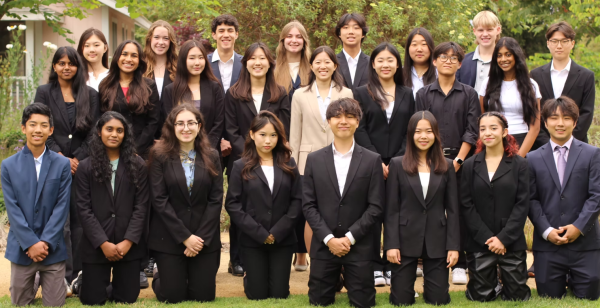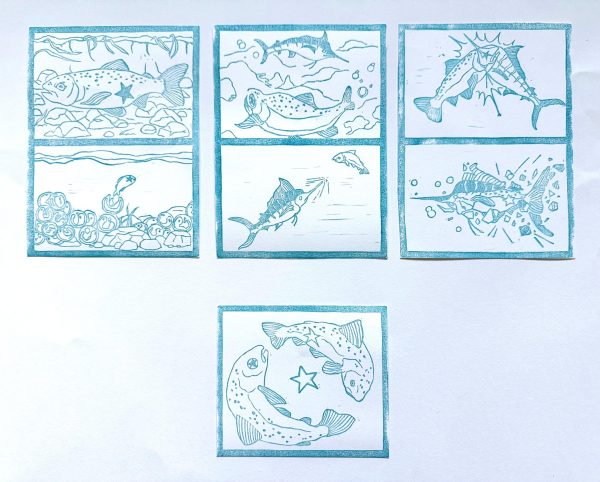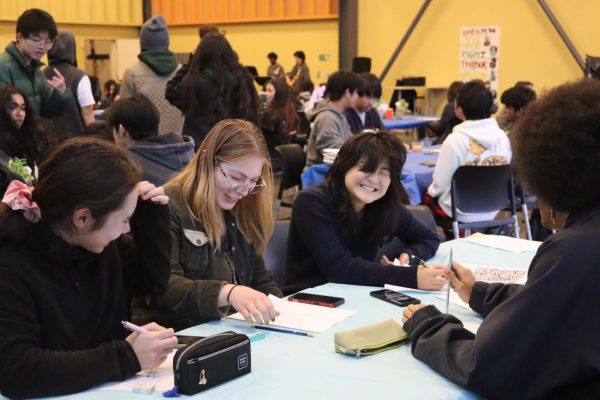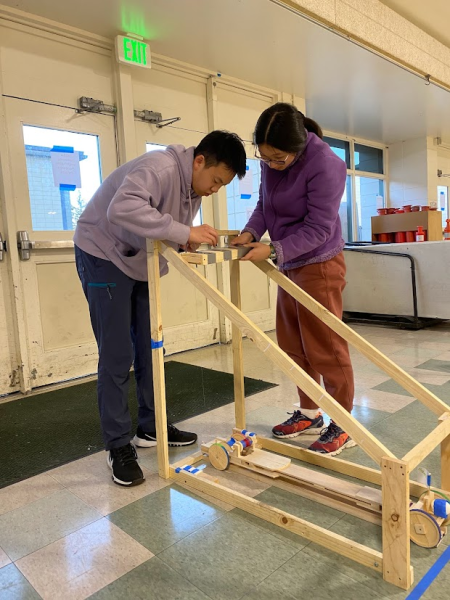Subscribing to education
Students use Youtube as a studying tool
It is not surprising that out of 215 responses to a survey sent out to the student body, 56 percent reported that they use educational YouTube videos to study important concepts for a test. Strikingly, 55 percent also said they watch videos because their teachers were unclear when originally explaining the topic.
Popular educational YouTube channels such as Khan Academy, CrashCourse and Bozeman Science all cater to the learning needs of students outside of the classroom. The creators’ concept of teaching with background diagrams appeals to many people in the YouTube community by providing an alternative learning environment to millions of student viewers.
“They break things down to simple terms just like your teachers and they get your questions answered quickly,” senior Savita Sastry said. “I like the way that they have graphics and use [them] to explain [concepts].”
According to the Los Altos School District website, Khan Academy instruction was implemented into the learning environment of some mathematics classrooms in 2010 to study the effect of video-based learning.
The results concluded that the students who participated performed higher on tests, preferred their intimate educational experience and were more engaged with what they were studying.
Freshman Jamie Siegler said she had a similar experience while watching Khan Academy as she found the videos to be extremely helpful.
“I don’t learn things as fast as other people, so it … gives me more confidence … to understand what we are learning,” Siegler said.
The Khan Academy experiment was an overall success in proving the potential videos may have on the future of education, although further research is still being conducted.
Unlike the students in the Khan Academy trial, the majority of students at HHS only watch videos a couple of times per week, according to the survey. However, YouTube learning still proves to be a vital asset to some students’ academic success.
“Videos are usually a staple in my studying,” Sastry said. “If there is something I don’t understand in class … somebody else explaining it in a different way would help.”
Similar to Sastry, many students tend to use videos to study primarily mathematics, science and history, according to the survey.
Math teacher Gary Auten has his own YouTube channels for his students, both of which combined boast approximately 300 videos, over 1,000 subscribers and above 500,000 views, Auten said in an email.
“I wanted another resource besides myself for the students to be able to access … and YouTube videos were a way to service those repetitive needs for information,” Auten said. “I was just creating another me.”
Siegler, who is one of Auten’s students, said she enjoys the style of the video lessons taught by both Auten and other YouTubers.
“He goes at a slow, steady pace which really helps me because I am a really slow learner,” Siegler said. “They make it very visual, they show you every step, and … [they do] the problem with you.”
Compared to lecture-based learning, videos allow students to learn at their own pace by pausing the video and re-watching concepts they do not understand. On the other hand, lectures give students a live experience with the teacher where they can ask clarification questions and get more in-depth answers.
“I think it’s a combination of both: students have access to me … and they have access to me again if they need a slower pace,” Auten said. “To me, having both is really an ideal way to teach.”
Likewise, Sastry said her effective learning experience would be incomplete with just one method of learning.
In the survey, 65 percent said videos are at least considerably or extremely helpful to their academic success, verifying the important role YouTube plays in education.
“I would suggest that teachers remain open to the possibility,” Auten said. “Having supplemental videos for certain subjects might be a way to help their students learn and eliminate some of the repetitive demands their students may have.”








Jamie Siegler • Nov 17, 2015 at 6:54 pm
I love how this article incorporated many aspects and opinions. There were clear transitions into each topic that made it appealing to read. I was an interviewee and was nervous and remembered most of my answers were confusing, long, and overall not witty but Jeanna was able to pick the best of what I said and explain it in a clear manner. I hope this gets put in the epitaph, as I would love to see this amazing article put in for others to be exposed to!